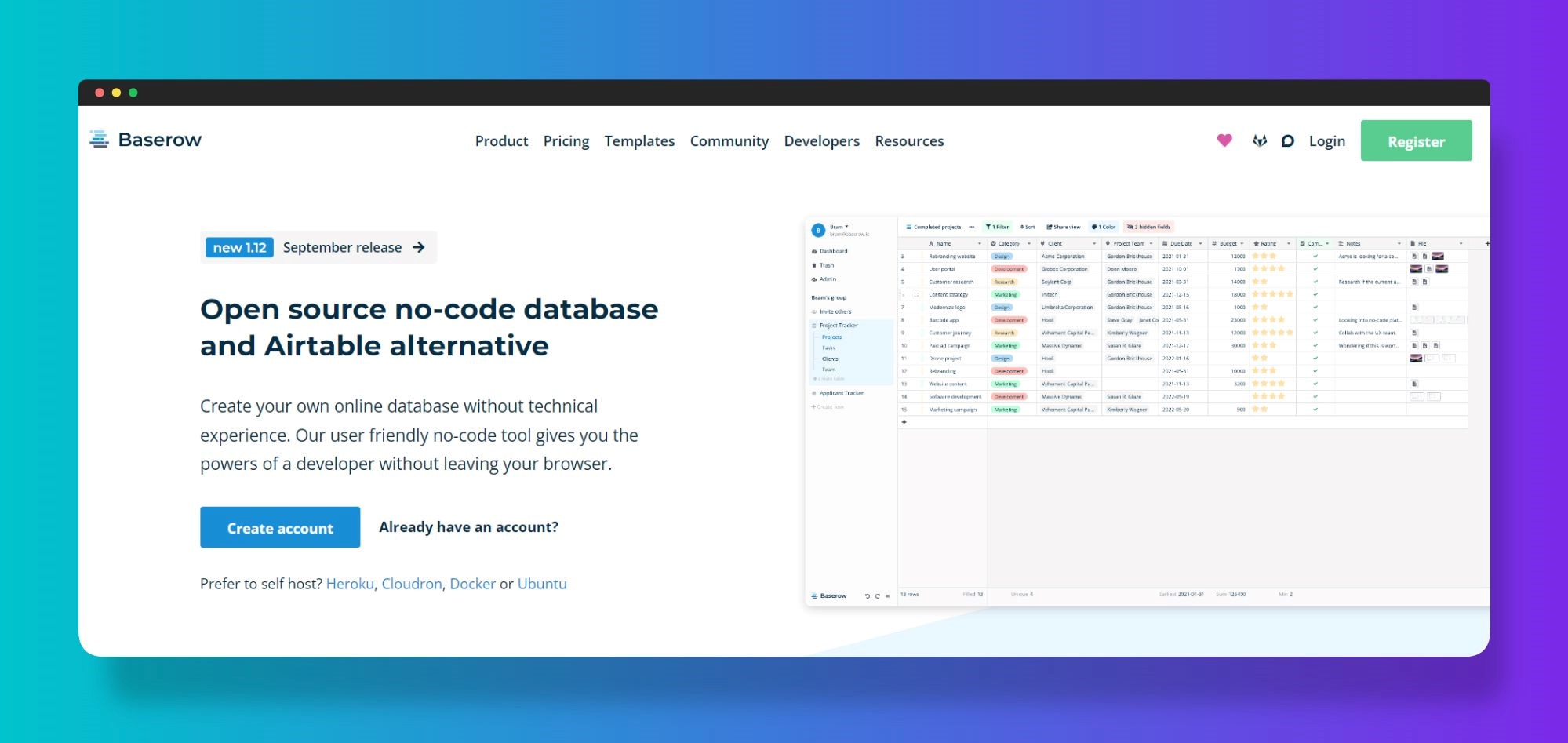No-Code Open Platform Database Development: Simplify Complex Development Tasks
No-Code Open Platform Database Development: Simplify Complex Development Tasks
Blog Article
Checking Out the Advantages of Scalable Databases That Require No Coding Abilities for Effective Information Administration Solutions
The emergence of scalable data sources that get rid of the need for coding skills offers a transformative opportunity for companies looking for effective information administration services. As we think about the ramifications of such improvements, it ends up being vital to examine just how they can reshape the landscape of data management and drive sustainable growth in an affordable environment.
Improved Availability for Users
Enhanced accessibility for individuals is a crucial facet of scalable data sources, making sure that information management systems are straightforward and instinctive. In an era where data-driven choices are vital, availability permits a broader variety of customers, consisting of those without comprehensive technical know-how, to involve with database systems effectively. This democratization of data gain access to helps with enhanced cooperation across departments, empowering staff members to draw out insights and make notified decisions.
Easy to use user interfaces, such as aesthetic information and drag-and-drop functions representation, simplify complex data interactions. These improvements minimize the knowing contour associated with standard data source monitoring, allowing individuals to concentrate on leveraging data instead of coming to grips with technical intricacies. Moreover, scalable data sources commonly include customizable control panels and real-time analytics, providing individuals with immediate understandings customized to their particular demands.

Cost-Effectiveness and Source Cost Savings
Efficient information administration not only rests on access yet additionally on cost-effectiveness and source financial savings. Scalable data sources created for individuals with no coding abilities significantly decrease financial worries typically associated with typical database management systems. By removing the requirement for specialized programming proficiency, companies can assign their sources much more successfully, focusing funds on core service activities as opposed to considerable training or employing experienced employees.
Furthermore, these data sources typically make use of cloud-based services, which better decrease prices related to equipment and maintenance. Organizations can scale their data source services according to their needs, preventing the expenses incurred from over-provisioning sources. This flexibility implies businesses can adapt to transforming needs without incurring unneeded costs, causing substantial long-lasting financial savings.
Furthermore, straightforward interfaces improve data access and management procedures, lowering the time invested in management tasks. This effectiveness converts into labor expense financial savings, allowing teams to concentrate on strategic initiatives instead than regular maintenance. In general, embracing scalable databases that need no coding abilities cultivates an extra cost-efficient approach to data administration, allowing companies to maximize their sources while preserving high levels of operational efficiency.
Improved Cooperation Throughout Teams

In addition, scalable databases help with smooth interaction amongst staff member. With user-friendly interfaces that need no coding abilities, staff members can conveniently develop, modify, and share reports or dashboards tailored to their certain requirements. This democratization of information encourages non-technical website here customers to contribute insights, enhancing the collaborative atmosphere.
Furthermore, these data sources sustain simultaneous accessibility, permitting numerous customers to service the very same dataset at the same time. This function boosts performance, as groups can take part in joint information evaluation without the threat of variation control concerns. The capacity to leave remarks or notes straight within the data source better promotes dialogue and clarifies data interpretations.
Streamlined Information Monitoring Processes
In today's data-driven setting, companies recognize the necessity of structured information monitoring processes to maximize efficiency and accuracy. By leveraging scalable databases that need no coding skills, services can streamline their data handling and decrease the complexities normally linked with typical database systems. This accessibility empowers non-technical customers to involve straight with data, assisting in quicker decision-making and minimizing dependence on specialized IT personnel.
Streamlined information management procedures enhance workflow by automating regular jobs such as data entry, recognition, and coverage. Automated data assimilation makes sure that information from numerous sources is accumulated perfectly, eliminating silos and cultivating a merged view of critical organization metrics (no-code). In addition, easy to use interfaces permit workers to manipulate data easily, enabling them to produce insights that drive critical efforts without the demand for substantial training.
This performance not only accelerates functional processes yet likewise minimizes the possibility for human error, ensuring that information continues to be precise and reputable. Ultimately, structured information monitoring processes with scalable data sources bring about enhanced productivity, enabling companies to concentrate on core activities while guaranteeing that their data administration techniques are find this effective and reliable.
Scalability for Growing Organizations

For expanding ventures, the capacity to scale up or down is critical. A scalable data source can deal with an influx of information created from new customers, items, or solutions, guaranteeing that company operations continue to be undisturbed. Furthermore, these databases give the ability to manage peak lots effectively, which is important throughout durations of rapid development or seasonal spikes.
Additionally, lots of scalable database options are developed with straightforward interfaces that call for no coding skills, empowering non-technical personnel to manage information efficiently (no-code). This democratization of information management permits companies to allocate sources strategically and minimize dependency on specialized IT employees
Eventually, taking on a scalable data source not only boosts functional effectiveness but additionally promotes an environment where organizations can introduce and develop without the restraints of conventional data source systems. This adaptability settings companies for long-term success in today's affordable landscape.
Conclusion
In verdict, scalable databases that call for no coding skills supply substantial advantages for effective information monitoring. These systems improve ease of access for non-technical customers, lower operational costs, and promote cooperation across teams. By simplifying data administration processes and using scalability for expanding businesses, such solutions make it possible for companies to adapt to altering demands properly. Inevitably, the adoption of these straightforward databases promotes technology and positions services for long-term success in a dynamic setting.
Boosted availability for customers is a crucial aspect of scalable data sources, making certain that data management systems are easy important source to use and user-friendly.User-friendly user interfaces, such as aesthetic data and drag-and-drop attributes depiction, simplify intricate data interactions. On the whole, embracing scalable data sources that need no coding skills cultivates a much more cost-effective strategy to data monitoring, allowing companies to optimize their resources while maintaining high degrees of operational effectiveness.
By leveraging scalable databases that need no coding skills, services can simplify their information handling and reduce the intricacies generally linked with traditional data source systems - no-code.Streamlined data monitoring processes improve workflow by automating routine jobs such as data entrance, recognition, and reporting
Report this page